Discover Industrial IoT Spotlight
Industrial IoT Spotlight

Industrial IoT Spotlight
Author: Peter Rohde-Chen, Erik Walenza
Subscribed: 350Played: 6,643Subscribe
Share
Description
The Industrial IoT Spotlight Podcast shines a light on digital solutions that are impacting businesses today. Our mission is to feature the companies that are building the next generation of enterprise technologies, from architecture design to data management to business model innovation.
Our hosts, Peter Rohde-Chen and Erik Walenza, are friends and entrepreneurs based in Shanghai, China. The Industrial IoT Spotlight is produced by Asia Growth Partners, a group of technology experts and business leaders, who help technology companies and corporates navigate technology development, implementation, and adoption in Asia.
Don't forget to follow us on LinkedIn @asia-growth-partners-agp or visit our website at https://asiagrowthpartners.com. You can contact Erik directly at erik.walenza@asiagrowthpartners.com
Our hosts, Peter Rohde-Chen and Erik Walenza, are friends and entrepreneurs based in Shanghai, China. The Industrial IoT Spotlight is produced by Asia Growth Partners, a group of technology experts and business leaders, who help technology companies and corporates navigate technology development, implementation, and adoption in Asia.
Don't forget to follow us on LinkedIn @asia-growth-partners-agp or visit our website at https://asiagrowthpartners.com. You can contact Erik directly at erik.walenza@asiagrowthpartners.com
249 Episodes
Reverse
In this episode we spoke with Damien Wong, Senior Vice President for Asia Pacific at Tricentis, about how Agentic AI is redefining software quality assurance (QA) for enterprises navigating digital transformation. Damien shared his journey through 30 years in enterprise technology and explained how Tricentis is pioneering a future where autonomous testing drives both speed and reliability in software delivery. We explored why QA is fast becoming a board-level priority, how AI is removing the human bottlenecks in testing, and why quality is now existential in sectors like finance, healthcare, and government. Key Insights: • From manual to agentic: QA has evolved from manual testing to script-based automation, to codeless model-based testing, and now to agentic test automation. The equivalent of moving from driving a car to a fully autonomous vehicle. • AI-accelerated quality: Tricentis' agentic automation enables systems to autonomously create, execute, and adapt tests, dramatically accelerating release cycles and reducing risk from untested code. • Quality as a board concern: In Tricentis' Quality Transformation Report, two-thirds of organizations admitted to shipping untested code, making QA failures a C-suite and reputational risk rather than an IT issue. • Compliance through transparency: With acquisitions like SeaLights, Tricentis helps enterprises prove that every code change has been tested—critical for regulated sectors and global compliance. • Bring-your-own-AI flexibility: Tricentis' support for the Model Context Protocol (MCP) allows companies to plug in their own private AI models, ensuring data security and regulatory control while leveraging AI capabilities. • Empowering, not replacing, engineers: AI-driven testing shifts QA teams from repetitive test creation to strategic oversight, while tools like NeoLoad with natural language prompts make performance testing accessible to non-technical users. • Industry impact: From Zespri's self-healing ERP testing to preventing outages like Haribo's global gummy bear disruption, intelligent QA ensures business continuity and customer trust. • Future outlook: With 90% of code expected to be AI-generated within a year, the ability to test at AI speed will define competitive advantage in enterprise software delivery. IoT ONE case study database: https://www.iotone.com/case-studies The Industrial IoT Spotlight podcast is produced by Asia Growth Partners (AGP): https://asiagrowthpartners.com
In this episode, we spoke with Sean Hehir, CEO, and Jonathan Tapson, Chief Development Officer, of BrainChip about neuromorphic computing for edge AI. We covered why event-based processing and sparsity let devices skip 99% of useless sensor data, why joules per inference is a more honest metric than TOPS, how PPA (power, performance, area) guides on-device design, and what it will take to run a compact billion-parameter LLM entirely on device. We also discussed practical use cases like seizure-prediction eyewear, drones for beach safety, and efficiency upgrades in vehicles, plus BrainChip's adoption path via MetaTF and its IP-licensing business model. Key insights: • Neuromorphic efficiency. Event-based compute minimizes data transfer and optimizes for joules per inference, enabling low-power, real-time applications in medical, defense, industrial IoT, and automotive. • LLMs at the edge. Compact silicon and state-based designs are pushing billion-parameter models onto devices, achieving useful performance at much lower power. • Adoption is designed to be straightforward. Models built in standard frameworks can be mapped to BrainChip's Akida platform using MetaTF, with PPA guiding silicon optimization and early evaluation possible through simulation and dev kits. • Compelling use cases. Examples include seizure-prediction smart glasses aiming for all-day battery life in a tiny form factor and drones scanning beaches for distressed swimmers. Most current engagements are pure on-edge, with hybrid edge-plus-cloud possible when appropriate. IoT ONE database: https://www.iotone.com/case-studies The Industrial IoT Spotlight podcast is produced by Asia Growth Partners (AGP): https://asiagrowthpartners.com/
In this episode we spoke with Mike Rohrmoser, VP of Product Management for OEM Solutions at Digi, a global provider of mission-critical IoT connectivity products and services. We explored how manufacturers are addressing labor shortages with IoT and automation, the trade-offs between retrofitting existing factories and building new ones, the evolving sensor and connectivity landscape, and practical steps to scale IoT pilots into production. Key insights: • Retrofitting existing plants is often the smarter move. Brownfield upgrades can cost 40–60% less than new builds and achieve faster returns when paired with business-focused use cases and retrofit connectivity. • Sensors and networks must be judged as a whole system. Industrial buyers weigh accuracy, deployment simplicity, and lifetime cost over unit price, with wireless IO-Link and LTE Cat 1 gaining traction and 5G RedCap on the horizon. • Edge AI is real, but focused. Today it is most effective in computer vision for quality inspection and counting, while new designs anticipate broader workloads as adoption matures. • GenAI augments people, not machines. Its strengths are in analysis, documentation, and device management, while safety-critical real-time control remains firmly in the domain of conventional automation. • Scaling pilots requires proving value early. Many initiatives stall when they start with technology instead of problems; success depends on production-ready components, operator trust, and leadership alignment. IoT ONE database: https://www.iotone.com/case-studies The Industrial IoT Spotlight podcast is produced by Asia Growth Partners (AGP): https://asiagrowthpartners.com/
In this episode, we spoke with Ian Itz, Executive Director of IoT at Iridium, about how satellite connectivity is transforming the reach and resilience of IoT solutions worldwide. Ian went from building satellites for the U.S. Navy and Air Force to leading Iridium's IoT business, where he oversees global partnerships and next-generation satellite-enabled modules. We explored how Iridium's unique low Earth orbit (LEO) constellation is supporting both industrial and consumer applications, and how standards-based approaches such as NB-IoT are expanding the satellite IoT ecosystem. Key Insights: • Global coverage at scale: Iridium operates a 75-satellite LEO constellation, providing always-on connectivity anywhere on Earth, enabling reliable communication in maritime, aviation, heavy equipment, regulated fishing, and consumer markets. • No service sunsets: Iridium maintains backward compatibility for legacy devices, ensuring IoT deployments can operate for 10+ years without forced upgrades, while still adding new higher-throughput modules like the 9704. • Standards-based evolution: Beyond proprietary protocols, Iridium is integrating NB-IoT over its network with partners such as Nordic Semiconductor, giving customers more choice and flexibility. • Edge + AIoT synergy: By processing data at the edge and sending only essential packets via satellite, customers reduce costs and improve efficiency. AIoT adoption is accelerating this model for industrial and consumer use cases. • Security and precision: With its new PNT (Positioning, Navigation & Timing) service, Iridium enhances GPS resilience, detecting spoofing and providing verified location data, critical for sensitive IoT deployments. IoT ONE database: https://www.iotone.com/case-studies The Industrial IoT Spotlight podcast is produced by Asia Growth Partners (AGP): https://asiagrowthpartners.com/
In this episode, we spoke with Richard Savoie, Co-founder and CEO of Adiona Tech, about how AI and logistics software are accelerating the transition to smarter, greener cities. Richard shared his journey from medical devices to sustainable logistics, and how Adiona is helping global enterprises—from Coca-Cola to Australia Post—optimize fleets, cut emissions, and prepare for an electric and autonomous future. We explored why electrification requires new software, how AI digital twins reduce risk, and how sustainability can become a competitive advantage in logistics. Key Insights: • AI-powered fleet optimization: Adiona uses digital twins and AI simulations to boost vehicle utilization from ~60% toward 100%, maximizing assets while reducing costs and emissions. • Bridging electrification gaps: EVs and cargo bikes behave differently than diesel fleets, and Adiona's software closes that gap, making sustainable adoption practical and profitable. • Scalable impact: Partnerships with PepsiCo and Australia Post demonstrate measurable reductions in emissions and logistics costs, while improving customer retention. • Sustainability as strategy: Companies are turning emissions reporting into a competitive edge, with leaders like PepsiCo using low-carbon fleets to differentiate their brand and win contracts. • Future-ready logistics: We discussed autonomous vehicles, sidewalk robots, and hybrid delivery networks that will reshape how goods move through cities. IoT ONE database: https://www.iotone.com/case-studies The Industrial IoT Spotlight podcast is produced by Asia Growth Partners (AGP): https://asiagrowthpartners.com/
In this episode, we spoke with Sahitya Senapathy, Founder and CEO of Endeavor, about how generative AI and agentic platforms are redefining the future of manufacturing. Sahitya shared his journey from coding for FEMA to founding Endeavor from his college dorm room. We explored how Endeavor is using AI labor to tackle the chronic inefficiencies in back-office and front-office workflows, and how this technology could help revitalize U.S. manufacturing in the face of labor shortages and global competition. Key Insights: • Agentic AI for factories: Endeavor applies generative AI agents to automate medium-complexity tasks—such as supplier onboarding, sales order entry, and invoice reconciliation—that ERPs and SaaS tools still leave to humans. • AI as a workforce multiplier: Clients gain the equivalent of hundreds of 24/7 digital employees, cutting cycle times from months to days while freeing human staff for higher-value activities. • Native AI architecture: Unlike ERP add-ons or copilots, Endeavor's platform is designed from the ground up for AI agents, delivering outcomes (e.g., documents processed, invoices reconciled) rather than seat-based licenses. • Scaling with demand: Backed by US$7 million in funding from Kraft Ventures and others, Endeavor aims to become a generation-defining enterprise software provider for manufacturing, on par with SAP and Oracle in impact. • Re-industrialization driver: As U.S. factories face a "silver tsunami" of retirements, Endeavor positions AI labor as the answer to labor shortages, helping new manufacturing plants scale without relying solely on human hiring. • Partnership approach: Sahitya emphasizes humility and collaboration—working with veteran CIOs and digital leaders to deploy AI in ways that complement their deep industry expertise. IoT ONE database: https://www.iotone.com/case-studies The Industrial IoT Spotlight podcast is produced by Asia Growth Partners (AGP): https://asiagrowthpartners.com/
In this episode, we spoke with Barzan Mozafari, CEO and Co-founder of Keebo.ai, about how AI is transforming the economics of cloud data warehouse management. Barzan shared his journey from academic research to launching Keebo, and how his team is redefining performance optimization in enterprise data systems through AI-powered "data learning." We explored the value of automating infrastructure decisions, and why buying—not building—is the future for data teams under pressure. Key Insights: • Data learning: Keebo introduces a new paradigm that learns from metadata to automate and accelerate database tuning and optimization. • Plug-and-play value: No code rewrites, no data migration. Setup takes just 30 minutes. • Cost-driven AI: Automatically adjusts cloud warehouse configurations in real time. • Privacy-first design: Models run solely on metadata, with no access to sensitive data or queries. • Aligned incentives: Keebo charges based on savings delivered, creating a no-risk, ROI-driven adoption model. IoT ONE database: https://www.iotone.com/case-studies Industrial IoT Spotlight podcast is produced by Asia Growth Partners (AGP): https://asiagrowthpartners.com/
In this episode, we spoke with Jonatan Bjork, Co-founder of Llongterm, about how persistent memory is changing the way AI systems interact with users across industries. Jonathan shared the personal journey that led to founding Llongterm, and how their technology allows AI to retain meaningful context across interactions. We explored how memory transforms user trust, the architecture behind Llongterm's Mind-as-a-Service, and the future of portable AI memory. Key Insights: • Mind-as-a-Service: Specialized, persistent memory units that can be embedded in apps, tailored by use case (e.g. job interview prep, customer support). • Structured and Transparent: Information is stored in user-readable JSON format, allowing full visibility and control. • Self-structuring memory: Data automatically categorizes itself and evolves over time, helping apps focus on what matters most. • Portable and secure: Users can edit or delete their data anytime, with future plans for open-source and on-premise options. • Universal context: A future vision where users bring their own "mind" across AI apps, eliminating the need to start over every time. IoT ONE database: https://www.iotone.com/case-studies Industrial IoT Spotlight podcast is produced by Asia Growth Partners (AGP): https://asiagrowthpartners.com/
In this episode, we spoke with Sundeep Ahluwalia, Chief Product Officer at TDK SensEI, about how AI is transforming data-driven decision-making in industrial environments. Sundeep shared his journey from data analytics to founding SensEI, and how his team helps manufacturers unlock the hidden potential in their operational data. We explored the challenges of AI adoption in traditional industries, the importance of domain knowledge, and how to move from descriptive analytics to actionable intelligence. Key Insights: • Plug-and-play AI: Automatic data labeling and model deployment with no manual setup. • Edge-first design: AI runs on-device for real-time alerts without cloud latency. • Predictive insights: Identifies failures weeks in advance to cut downtime. • Enterprise-ready: Built-in cybersecurity, on-prem/cloud flexibility, ERP integration. • Scalable platform: Designed to grow with use cases, from sensors to digital twins. IoT ONE database: https://www.iotone.com/case-studies Industrial IoT Spotlight podcast is produced by Asia Growth Partners (AGP): https://asiagrowthpartners.com/
In this episode, we spoke with Lawrence Eta, former CTO of the City of Toronto and a global digital transformation leader. Now advising the Royal Commission for AlUla, Lawrence shares lessons from leading large-scale public sector innovation and shaping inclusive, future-ready smart cities. Key Insights: • Smart governance enables smart cities: Success depends more on leadership, architecture, and inclusive policy than on technology alone. • The 5S framework drives decision-making: Stability, scalability, solution integration, security, and sustainability help prioritize city tech projects. • Public-private partnerships expand access: Toronto's free community internet project shows how tech can close affordability gaps, not just improve infrastructure. • Community voice builds trust: Toronto's digital strategy was shaped by town halls and diverse stakeholder input, ensuring transparency and relevance. • Scaling innovation requires cultural change: Empowering staff at all levels with clear processes and leadership sponsorship is key to sustainable adoption. IoT ONE database: https://www.iotone.com/case-studies Industrial IoT Spotlight podcast is produced by Asia Growth Partners (AGP): https://asiagrowthpartners.com/
In this episode, we spoke with Dima Feldman, VP of Product Management and Marketing at Sony Semiconductor Israel, about the long-term viability of LTE-M technology and its role in IoT connectivity. We explored how LTE-M compares to other cellular IoT standards, its advantages in power efficiency and longevity, and how it fits into the 5G ecosystem. Key Insights: Longevity and Future-Proofing: LTE-M ensures IoT connectivity for decades, with some deployments lasting until 2045. Power Efficiency and Cost Savings: Lower power consumption enables years of battery life, reducing maintenance costs. 5G Integration: LTE-M and NB-IoT coexist with 5G, serving low-power IoT applications. Regional Adoption Differences: LTE-M dominates in North America and Europe, while China and India favor NB-IoT. Industry Applications: Used in smart utilities, logistics, asset tracking, and emerging iSIM solutions. IoT ONE database: https://www.iotone.com/case-studies Industrial IoT Spotlight podcast is produced by Asia Growth Partners (AGP): https://asiagrowthpartners.com/
In this episode, we spoke with Jan Burian, Head of Industry Insights at Trask, about the future of manufacturing, sustainability, and the role of emerging technologies. With a background in consulting at IDC, EY, and Deloitte, Jan shares insights on key trends like automation, AI, and digital twins, and how Europe's manufacturing sector can stay competitive by accelerating innovation and adapting to material and workforce challenges. Key Insights: • Automation and AI are reshaping manufacturing – The integration of automation and AI is crucial for maintaining efficiency, especially as skilled labor shortages grow in Europe. • The power of data foundations – Successful adoption of Industry 4.0 technologies depends on strong data governance, breaking down silos, and ensuring interoperability between systems. • Hyperautomation and digital twins – End-to-end automation and digital twins are enabling smarter production processes, reducing waste, and improving sustainability. • Material innovation and sustainability – Lightweight and recyclable materials are key to making manufacturing more sustainable and cost-effective, particularly in Europe, where resource availability is limited. • Industry 4.0's evolving path – Many companies initially overestimated the benefits of Industry 4.0. Now, organizations are refocusing on foundational elements like data management before scaling advanced use cases. IoT ONE database: https://www.iotone.com/case-studies Industrial IoT Spotlight podcast is produced by Asia Growth Partners (AGP): https://asiagrowthpartners.com/
In this episode, we speak with Onofrio Pirrotta, Senior Vice President and Managing Partner at Kyndryl, about the state of IT readiness in industrial sectors. We dive into key findings from Kyndryl's 2024 Readiness Report, the role of AI and IoT in digital transformation, and strategies for overcoming barriers to scaling innovation. Onofrio shares insights on bridging IT and OT, managing cybersecurity risks, and structuring governance models to drive ROI from new technologies. Key Insights: • The Readiness Paradox: 88% of manufacturers believe their IT environments are best-in-class, yet 55% say their tools are outdated, and only 31% feel prepared for future risks. • Bridging IT and OT: Successful digital transformation requires breaking down silos between IT and operational technology teams to enable enterprise-wide adoption. • Scaling Innovation: Many industrial firms struggle to move IoT and AI pilots beyond proof-of-concept due to unclear ROI and governance challenges. A structured framework with executive sponsorship is key. • Cybersecurity & Resilience: Large enterprises face increasing regulatory and supply chain security pressures. Simplifying cybersecurity tools and adopting a zero-trust framework are top priorities. • AI-Driven Operations: AI is increasingly auto-resolving IT infrastructure issues, reducing downtime and improving efficiency. However, companies must balance innovation with data security and compliance. Resources: • IoT ONE database: https://www.iotone.com/case-studies • Industrial IoT Spotlight Podcast is produced by Asia Growth Partners (AGP): https://asiagrowthpartners.com
In this episode, we sat down with David Hirschfeld, Founder & CEO of Tekyz to explore how AI is reshaping the software development landscape, both internally and for client-facing solutions. David shared insights on adopting an AI-first philosophy, leveraging AI for operational efficiency, and integrating cutting-edge tools into products. We also discussed the challenges of deploying AI across industries, navigating geopolitical constraints, and maintaining a competitive edge in an ever-changing tech ecosystem. Key Insights: AI-first mindset: Leveraging AI in operations and products drives innovation and long-term value. Efficiency gains: AI enhances delivery speed, code quality, and testing, improving productivity by up to 50%. Automation: AI tools enable automated microservices and scalable software development processes. Adoption challenges: Larger firms struggle with AI scaling due to complexity and cautious risk-taking. Privacy concerns: Addressing data security and compliance is essential, especially in regulated industries. Staying competitive: Innovating with AI helps companies adapt to rapid technological changes. Explore more industrial IoT insights: IoT ONE database The Industrial IoT Spotlight podcast is produced by Asia Growth Partners (AGP).
In this episode, we talked with Chris Baird, CEO of OptConnect, about the evolving IoT landscape and the strategies driving enterprise adoption. Our conversation explored key growth drivers in IoT, the challenges of scaling connectivity, and the technologies poised to redefine the industry, including Edge AI and the promise of 6G. Chris shared insights into how regulatory and environmental factors are accelerating IoT adoption, the impact of turnkey solutions on reducing total cost of ownership, and the pivotal role of simplicity in scaling IoT deployments. Key Insights: What drives IoT growth? Regulatory shifts, environmental needs, and cellular ubiquity fuel adoption. How do you cut IoT costs? Simplified plug-and-play solutions reduce complexity and hidden expenses. Why has 5G underdelivered? 6G offers transformative potential in cost, latency, and scalability. What's next for IoT? Edge AI enables smarter systems and expands use cases like healthcare and security. Where is IoT thriving? Retail, water management, and medical devices show rapid adoption. IoT ONE Database: https://www.iotone.com/case-studies The Industrial IoT Spotlight podcast is produced by Asia Growth Partners (AGP): https://asiagrowthpartners.com/
In this episode, we spoke with Zohar Bronfman, co-founder and CEO of Pecan, a predictive analytics platform that integrates machine learning and generative AI to simplify and accelerate AI adoption. Zohar shares how Pecan bridges technical and organizational barriers to help companies harness predictive insights for business decision-making. They discuss the evolving role of AI in industries, challenges faced by traditional companies, and how predictive GenAI can democratize access to advanced analytics. Key Questions Explored: • How does Predictive GenAI simplify AI adoption for non-experts? • Why is automation key to reducing AI project timelines? • How can small-scale AI testing minimize risk and ensure scalability? • What challenges hinder AI adoption, and how can they be overcome? • Why will predictive analytics shape the future of business decision-making? For more information on Pecan and how predictive analytics can transform your business, visit pecan.ai. Industrial IoT Spotlight podcast is produced by Asia Growth Partners (AGP): asiagrowthpartners.com.
In this episode, we spoke with Joey Hiller, Senior Technical Director at the Helium Foundation aboutthe transformative role of decentralized networks in IoT. We explored how blockchain incentives power scalable public networks, enabling new applications across urban and rural areas. Joey shared insights into the technology stack, innovative business models, and the challenges of creating reliable and resilient IoT connectivity. Key Insights: • Blockchain Incentives: Microtransactions encourage coverage expansion. • Decentralized Model: User-deployed gateways reduce telecom reliance. • Flexible Coverage: Supports urban and remote IoT applications. • Bundled Connectivity: Predictable costs enable service bundling. • Resilient Design: Decentralized structure ensures reliability. IoT ONE Database: https://www.iotone.com/case-studies Industrial IoT Spotlight podcast is produced by Asia Growth Partners (AGP): https://asiagrowthpartners.com
In this episode, we spoke with Omer Brookstein, CEO & Co-founder of Xyte, about the transformative potential of IoT for device manufacturers and the emerging shift towards service-oriented business models. We delved into how companies can leverage connected device platforms to manage the full lifecycle of their IoT devices, monetize features, and create long-term customer value. The conversation also explored the practical and business challenges of implementing subscription and usage-based models across industries. Key Insights: Subscription Shift: IoT enables manufacturers to adopt subscription and usage-based models for sustained revenue. Business Model Transformation: Moving to service-based models requires cross-functional collaboration and strategic alignment. Empowering Partners: Platforms help channel partners add value, boosting recurring revenue opportunities. Simplifying Complexity: Unified platforms reduce inventory and operational burdens by enabling remote feature management. Future-Ready Flexibility: Modular, collaborative platforms support growth and adapt to evolving business needs. IoT ONE database: https://www.iotone.com/case-studies The Industrial IoT Spotlight podcast is produced by Asia Growth Partners (AGP): https://asiagrowthpartners.com/
In this episode, we talked with Matt Van Itallie about the rapid integration of generative AI (GenAI) in software development and its profound impact on productivity and business practices. We discussed how GenAI is transforming coding processes, the risks involved, and strategies for mitigating those risks. The conversation also covers how organizations can maximize GenAI's benefits while maintaining security, legal compliance, and developer oversight in high-stakes environments like finance and health tech. Key Insights: • GenAI boosts productivity: GenAI can make developers up to 20% more efficient by assisting with routine tasks and enabling faster experimentation and prototyping. • Security and intellectual property risks: Despite its benefits, GenAI introduces risks, including security vulnerabilities and potential intellectual property issues depending on how the tools are used. • Importance of human oversight: Blending GenAI with human input is critical to ensure code accuracy, maintainability, and long-term security. • Enterprise-grade tools: Using enterprise or pro-tier GenAI tools is essential to avoid exposing sensitive company data and ensure compliance with legal standards. • Structured visibility and management: Organizations should implement clear strategies and tools to track GenAI use, especially in regulated industries, ensuring responsible and secure adoption. IoT ONE database: https://www.iotone.com/case-studies Industrial IoT Spotlight podcast is produced by Asia Growth Partners (AGP): https://asiagrowthpartners.com/
In our latest podcast episode featuring Jeremy Snyder, Founder & CEO of FireTail.io, we explored the evolving cybersecurity landscape and the crucial role of API security in protecting modern enterprises and IoT devices. 🔐 FireTail is leading the charge in end-to-end API security, ensuring that organizations can safeguard their systems from code to cloud. In our conversation, we dive into the implications of AI in cybercrime, the differences between cloud, on-premise, and edge device security, and the importance of API design in preventing breaches. 🎙 Key Takeaways: • The rise of AI and automation in cybercrime and its growing impact. • Why securing APIs is essential for modern software and IoT ecosystems. • Cloud vs. on-prem vs. edge: How to approach cybersecurity differently. • The importance of proper authorization controls in preventing API abuse. IoT ONE database: https://www.iotone.com/case-studies Industrial IoT Spotlight podcast is produced by Asia Growth Partners (AGP): https://asiagrowthpartners.com/


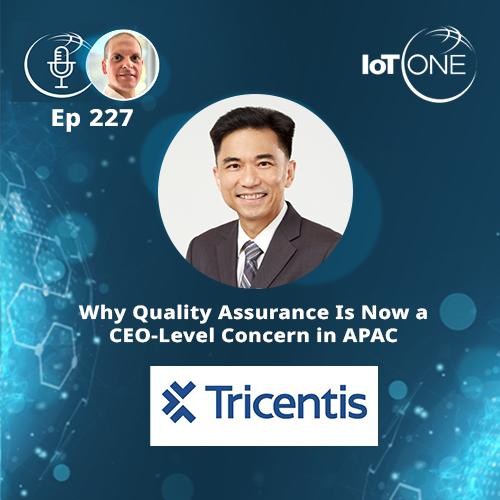
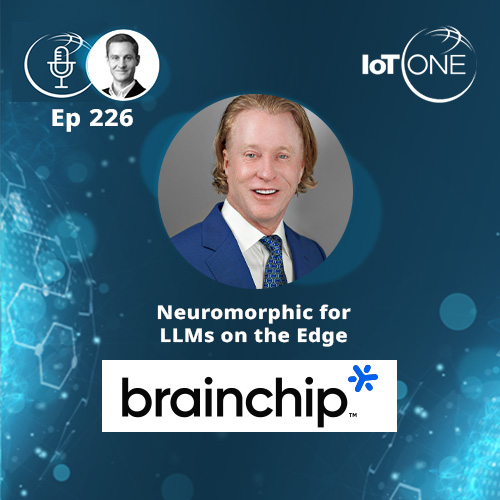
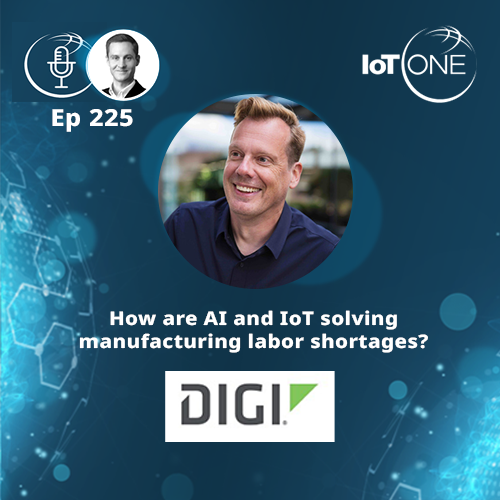
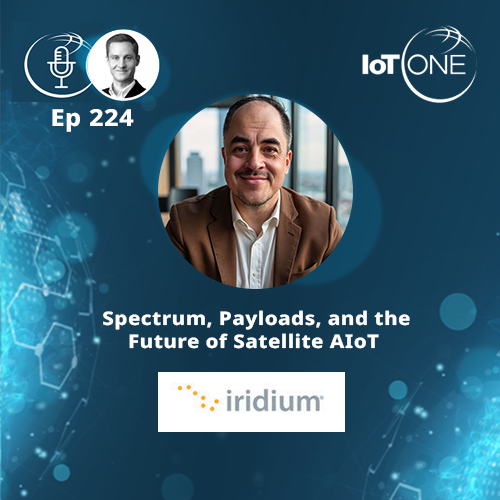
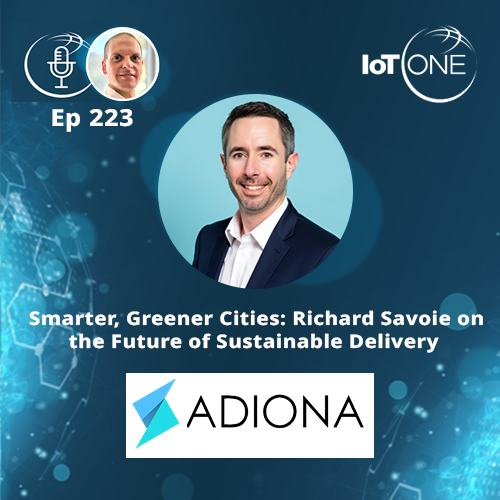
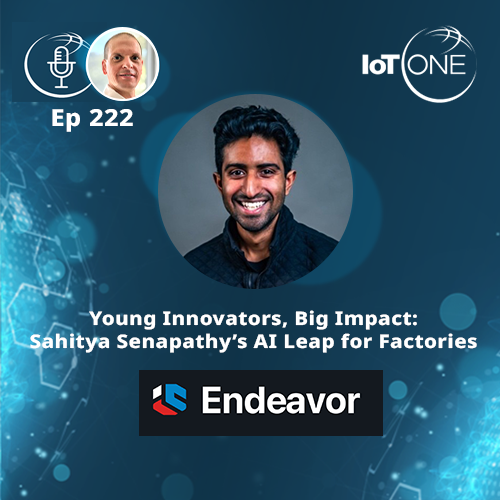
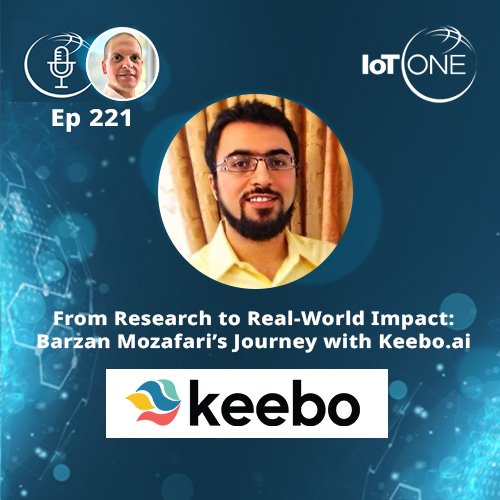
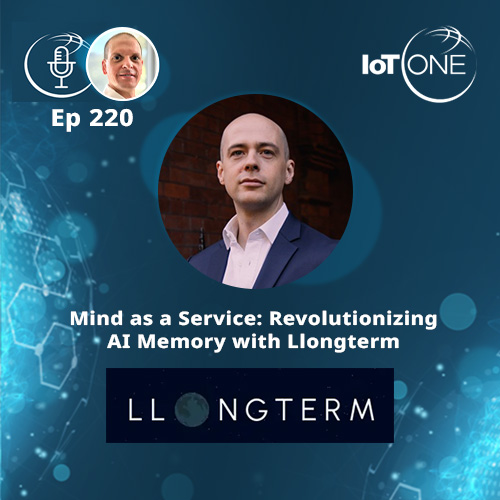

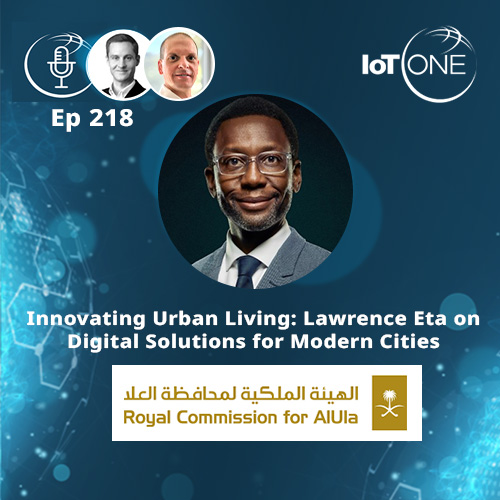






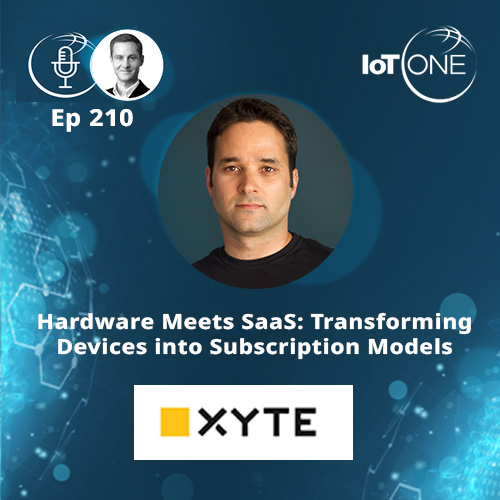





its a great talk i listened on podcast in recent time. Sastry is very clear anf sound in his knowledge and maturity in IoT implementation and broad views. Eric, thanks for the great talk.